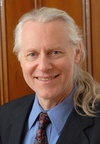 David Booth
David Booth
Senior software architect at Hawaii Resource Group and at Rancho BioSciences
Recorded April 2, 2015
Watch Recorded Webinar
Download Slides
Abstract
The Yosemite Project announced a roadmap for healthcare information interoperability at the Semantic Technology and Business Conference in August 2014, based on RDF as a universal information representation. Shortly thereafter the Office of the National Coordinator (ONC) announced its own draft interoperability roadmap and has invited public comments (due April 3, 2015). The goal of both roadmaps is to achieve interoperability of electronic healthcare information, but the focus and scope are different. The ONC roadmap is broader and less technical; the Yosemite Project roadmap is more ambitious.
This webinar compares these two roadmaps — showing how they coincide, differ and complement each other — and makes recommendations for strengthening the ONC roadmap. Webinar participants are also invited to share feedback and suggestions on how these roadmaps can be improved. Suggestions will be incorporated into a group comment that will be submitted to the ONC by members of the HL7 ITS subgroup on “RDF for Semantic Interoperability”, the W3C interest group on “Semantic Web for Healthcare and Life Sciences” and others interested in the Yosemite Project mission.
About the Speaker
